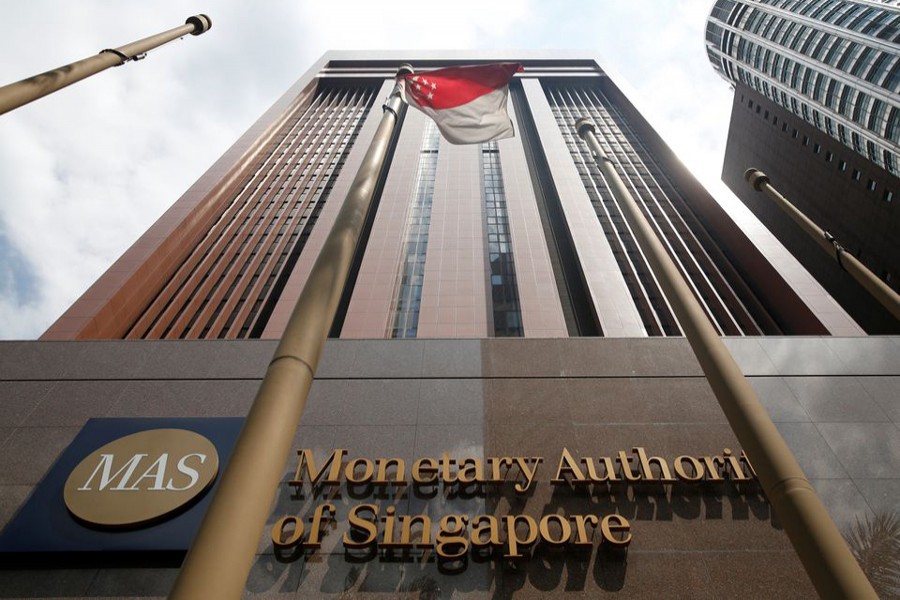Singapore is likely to tighten monetary policy this month, the fifth time in a row, amid persistent inflation in the Asian financial hub due to global supply chain disruptions and a tight labour market, reports Reuters.
All 16 economists polled by Reuters forecast the Monetary Authority of Singapore (MAS) to tighten its policy, but they are divided on how aggressive the central bank is likely to be and which of its various settings it will change.
Instead of interest rates, the MAS manages policy by letting the local dollar rise or fall against the currencies of its main trading partners within an undisclosed band, known as the Singapore dollar Nominal Effective Exchange Rate, or S$NEER.
It adjusts its policy via three levers: the slope, mid-point and width of the policy band.
Economists are split on whether MAS will tighten one or two of its three settings.
Those betting on only one lever largely cited the weak economic outlook.
Four analysts said the MAS would lift the mid-point, with no change to the width or the slope while another five expect the MAS to steepen the slope only.
Adjusting the mid-point is typically seen as a more "aggressive" tool than adjusting the slope, while the width is usually used to limit Singapore dollar volatility.
"Recentering of the midpoint helps to deal with short-term macro pressure more immediately, whilst steepening the S$NEER slope has historically been associated with a more upbeat macro outlook," said Morgan Stanley analysts in a report.
"Singapore's small, open economy and high export orientation mean that it is most exposed in Asia to a global demand slowdown...the balance of concern is likely to shift from upside risks to inflation to downside risks to growth as we head into 2023," they added.
The remaining seven analysts expect MAS to both steepen the slope and upwardly recentre the mid-point.
"MAS faces a worse growth-inflation tradeoff (in this October) than when it delivered an upward recentering of the S$NEER policy band in an off-cycle move in July," said Bank of America Securities' economist Mohamed Faiz Nagutha.
The central bank is expected to release its next semi-annual monetary policy statement no later than Oct. 14.
The MAS has tightened monetary policy four times in a row, with the latest in July in an out-of-cycle move.
Core consumer inflation hit a near 14-year high in August due to larger increases in the prices of services and food, while headline prices also beat analysts' forecast.
The MAS projects core inflation this year to be between 3 per cent and 4 per cent, while headline inflation is expected to be between 5% and 6%. Analysts expect the MAS to upwardly revise its inflation forecast at the October meeting.
The government had projected gross domestic product to expand 3-4 per cent in 2022. read more
Singapore has removed most of its Covid-19 curbs with high-profile international conferences and events returning to the city-state in recent months.


